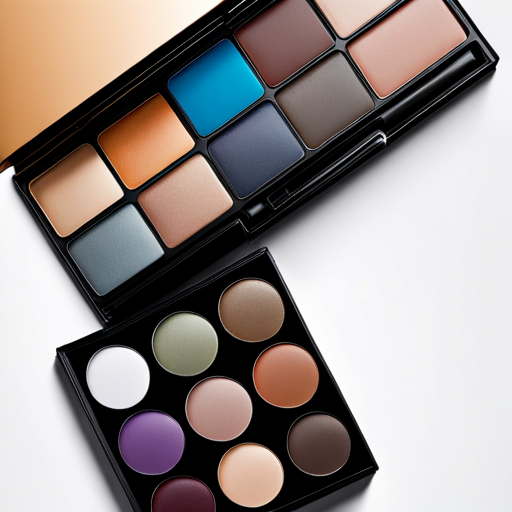Introduction
For musicians, live performers, and audio engineers, the right live vocal mic can make or break a performance. Whether you’re belting out your favorite tunes on stage, delivering a powerful speech, or ensuring the audience hears every note with clarity, having the best live vocal mic is crucial. In this blog post, we’ll explore what makes a great live vocal mic, highlight top picks on the market, and provide a comprehensive guide to help you choose the perfect one for your needs. Let’s get started!
The Importance of Choosing the Right Live Vocal Mic
Choosing the right live vocal mic is more than just picking a tool—it’s about enhancing your performance and connecting with your audience. A high-quality mic ensures that your voice is captured accurately, with clarity and richness. It can also reduce feedback and handle high sound pressure levels, allowing you to perform with confidence.
For live performers, the mic becomes an extension of their voice, amplifying every nuance and emotion. Audio engineers rely on the mic’s consistency and reliability to deliver an impeccable sound mix. Therefore, understanding the key features and capabilities of different live vocal mics is essential for making an informed decision.
Key Features to Consider
When selecting a live vocal mic, there are several key features to consider. These features will determine how well the mic performs in various environments and how it captures your voice.
Frequency Response
Frequency response refers to the range of frequencies a mic can capture. A wide frequency response ensures that both the low and high ends of your voice are accurately reproduced. This is particularly important for singers with a broad vocal range, as it allows the mic to handle everything from deep bass notes to high-pitched falsettos.
Polar Patterns
The polar pattern of a mic determines how it picks up sound from different directions. Common polar patterns include cardioid, supercardioid, and omnidirectional. Cardioid mics are great for live performances as they pick up sound from the front while rejecting noise from the sides and rear. Supercardioid mics offer even more directional focus, while omnidirectional mics capture sound from all directions, which can be useful in certain settings.
Sensitivity
Sensitivity measures how well a mic converts sound into an electrical signal. High sensitivity mics are more responsive to quiet sounds, making them ideal for capturing subtle vocal nuances. However, they can also pick up unwanted background noise, so finding the right balance is key.
Top Picks for Live Vocal Mics
With so many options available, finding the best live vocal mic can be overwhelming. Here are some top picks that stand out for their performance, features, and affordability.
Shure SM58
The Shure SM58 is a legendary mic known for its durability and reliability. It offers a cardioid polar pattern, which reduces feedback and isolates the main sound source. Its tailored frequency response makes it ideal for live vocals, providing a clear and present sound.
Sennheiser e935
The Sennheiser e935 is a dynamic cardioid mic designed for the demands of live performance. It features a wide frequency response and excellent feedback rejection, making it a favorite among professional singers. Its rugged construction ensures it can withstand the rigors of touring.
Audio-Technica AE6100
The Audio-Technica AE6100 is another excellent choice for live vocalists. It offers a hypercardioid polar pattern, providing superior isolation and maximum gain before feedback. Its robust design and clear, natural sound make it a top contender.
User Guide to Choosing the Best Live Vocal Mic
Selecting the best live vocal mic involves more than just picking a popular model. Here are some tips to help you make the right choice.
Test Different Mics
Visit a music store and test different mics in a live setting. Pay attention to how each mic captures your voice and handles background noise. Bring your own equipment if possible to ensure consistency in your testing environment.
Compare Features
Consider the key features discussed earlier—frequency response, polar patterns, and sensitivity. Determine which features are most important for your specific needs and compare different models accordingly.
Budget Considerations
While it’s tempting to go for the most expensive mic, there are plenty of affordable options that offer excellent performance. Set a budget and look for mics that provide the best value within that range. Remember, the most important factor is how the mic complements your voice and performance style.
Real-World Examples and Testimonials
Real-world experiences can provide valuable insights into the performance of different live vocal mics. Here are some testimonials from professionals who have used various models:
Anna Wilson, Professional Singer
“I’ve been using the Shure SM58 for years, and it never disappoints. Its durability and sound quality are unmatched, especially for live performances. I love how it captures the warmth of my voice while minimizing feedback.”
Mike Davis, Audio Engineer
“The Sennheiser e935 is my go-to mic for live shows. Its feedback rejection is phenomenal, and it handles high SPLs with ease. Whether I’m mixing for a rock band or a solo artist, the e935 always delivers.”
Sarah Lee, Indie Artist
“I recently switched to the Audio-Technica AE6100, and it’s a game-changer. The hypercardioid pattern provides excellent isolation, and the clarity of sound is incredible. It’s perfect for my acoustic sets.”
Technical Insights into Live Vocal Mics
Understanding the technical aspects of live vocal mics can help you make an informed decision. Here’s a deeper look into how these mics work and what makes some models stand out.
Dynamic vs. Condenser Mics
Live vocal mics are typically either dynamic or condenser. Dynamic mics are rugged and can handle high sound pressure levels, making them ideal for live performances. Condenser mics, on the other hand, are more sensitive and provide a wider frequency response, making them suitable for studio recordings and quieter live settings.
Handling Noise and Feedback
One of the biggest challenges in live performances is dealing with noise and feedback. Mics with cardioid or supercardioid polar patterns are designed to minimize these issues by focusing on the sound source and rejecting background noise. Advanced models may also include built-in shock mounts and pop filters to further reduce handling noise and plosive sounds.
Wireless Options
For performers who need freedom of movement, wireless mics are a great option. They eliminate the need for cables, allowing you to move around the stage without restrictions. Look for wireless systems with reliable signal transmission and long battery life to ensure uninterrupted performance.
Conclusion
Choosing the right live vocal mic is a crucial step for musicians, live performers, and audio engineers. By understanding the key features, testing different models, and considering real-world experiences, you can find the perfect mic to elevate your performance. Whether you opt for the legendary Shure SM58, the versatile Sennheiser e935, or the precise Audio-Technica AE6100, the right mic will help you connect with your audience and deliver an unforgettable performance.
Explore More and Join the Community
Ready to find your perfect live vocal mic? Explore our in-depth reviews and expert guides on our website. Stay connected with our community by following us on social media, and share your experiences and preferences. Sign up for our newsletter to receive the latest updates, tips, and exclusive deals. Subscribe to my email newsletter to stay updated on the latest articles, reviews, and deals. Together, we can continue to elevate our live performances and strive for perfect sound quality. So why wait? Join the community now! #micupyourperformance Sign up here to subscribe and stay connected with us. Let’s make some noise together!






